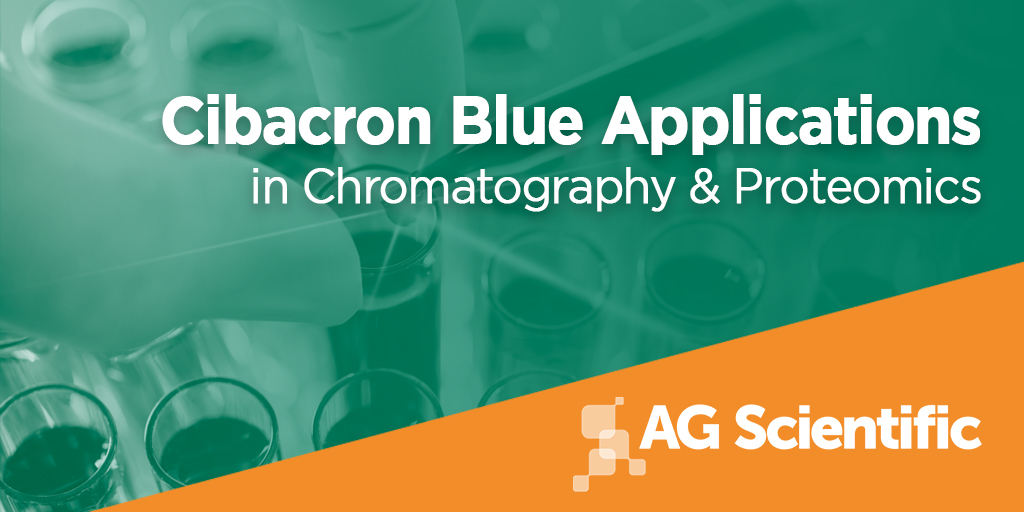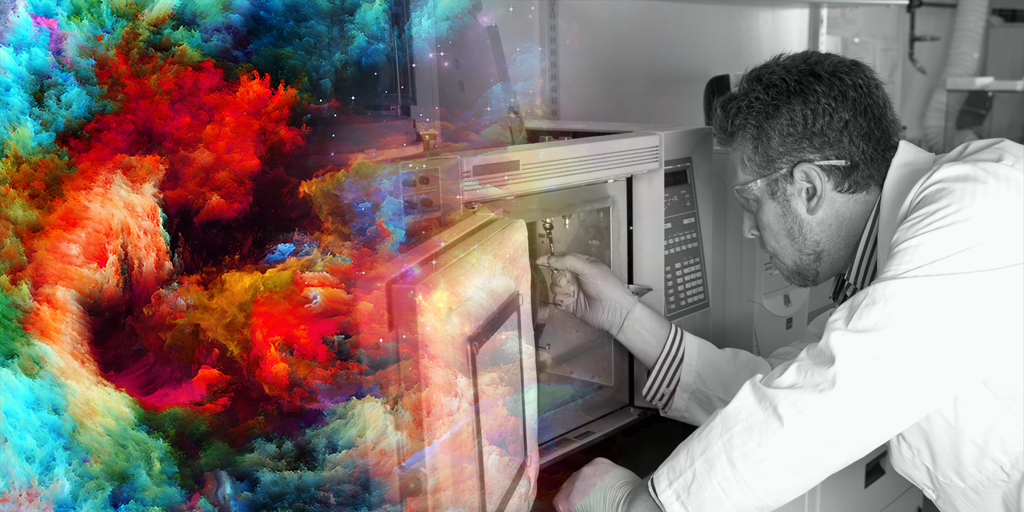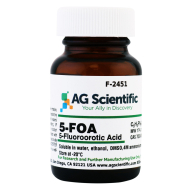Cibacron Blue 3GA is a textile dye or ligand frequently used as a medium for affinity chromatography experiments, specifically for the purification of enzymes. The ligand appears as a blue powder under room temperature settings.

Scientists and researchers commonly choose the compound for its affordability, ease of immobilization, high resistance against biological and chemical degradation, and high protein-binding capacity of corresponding absorbents - enabling it to function effectively as a bio-specific ligand. Researchers discovered that this product has the ability to bind to a diverse array unrelated proteins. These specialized chemical characteristics make the dye a popular research subject as a chromophore and immobilized ligand.
The Functions of Cibacron Blue
The product has a high affinity for various proteins and enzymes. Many scientists and researchers have applied immobilized (attached to an inert and insoluble material to provide improved resistance to chemical changes) Cibacron Blue 3GA as a chromatographic medium in the separation and purification of kinases, dehydrogenases, serum albumin, and a variety of other non-enzyme proteins. The anionic anthraquinone dye’s high affinity may result from its structural similarities with natural ligands of proteins with co-factor binding.Specifically, this product has multiple aromatic rings, enabling the dye to bind with the hydrophobic parts of a protein. Additional substitution of aromatics with sulfonic groups enables the dye to form bonds through electrostatic force. Hence, Cibacron Blue 3GA can bind with proteins and enzymes through a complex series of interactions, including hydrophobic, electrostatic, charge-transfer, and hydrogen-bonding methods. Molecular dynamics simulations identified that various parts of a CB molecule play specific roles in affinity interactions. The study determined that the binding sites on proteins differed according to chemical attributes such as pH and salt concentrations.

Notable Applications and Processes with Cibacron Blue 3GA
Dye-ligand Affinity Chromatography
Researchers developed Cibacron Blue 3GA as a useful affinity chromatography ligand during research on Blue Dextran (BD) processes. At the time, researchers used BD as a void volume marker in gel permeation studies. Cibacron Blue 3GA covalently attached to BD and did not conventionally interact with most gel permeation media. However, scientists observed an instance where an aged pillar of BD adhered to Sephadex (the combination of Blue Dextran and Sepharose, a polysaccharide polymer derived from seaweed). Further research drew a link between the blue chromophore and enzyme-binding reactions. Gradually, scientists discovered additional accidental enzyme-binding activities, leading to the formal application of Cibacron Blue 3GA as an effective purifying agent for various types of proteins.Generation and Performance Evaluation of Engineered Microsphere
Researchers combined Cibacron Blue 3GA, a natural polymer (agarose), and a ferromagnetic condenser to form an engineered microsphere agarose adsorbent. Scientists later applied Cibacron Blue 3GA to evaluate engineered microsphere agarose (EMA) within a fluidized-bed system. Additionally, the EMA immobilized by the dye-ligand showed higher stability in adsorption processes.Chromatographic Evaluation of Mammalian Proteins
Scientists studied the interferon-binding effects by three forms of the Cibacron Blue 3GA ligand: Cibacron Blue F3GA-Sepharose 4B, Blue Dextran-Sepharose 4B, and Blue Sepharose CL-6B. Interferons are signaling proteins that serve as a crucial component in the immune response of mammals, including humans. The study showed the practical separation of mammalian fibroblast interferons through affinity chromatography (equally successful in instances of crude and purified interferons) and the use of the dye-ligand as a suitable modulator of binding strength.Similarly, researchers discovered strong interactions between immobilized Cibacron Blue 3GA and Bovine lactoferrin isolated from colostral milk. Researchers attributed the reaction to electrostatic forces between sulfonic groups in the Cibacron Blue 3GA molecules and basic side-chain groups in the lactoferrin molecules. Lactoferrin is an active component in whey protein products, commonly linked with immunological defense and antimicrobial properties. The findings suggested affinity chromatography as a viable process in isolating lactoferrin from whey protein.
Purification and Removal of Albumin
Albumins are globular proteins produced by the liver, responsible for containing fluid within bloodstreams. Healthcare practitioners may prescribe human albumin treatment in cases of liver damage and other similar ailments. Pharmaceutical researchers may couple Cibacron Blue F3GA with suitable polymers (i.e.sepharose) in standard purification preparations. While albumin plays a crucial role in human bodily function, an excess amount may lead to severe side-effects like kidney damage. Chromatography preparations using columns with immobilized Cibacron Blue F3GA can help estimate and maintain albumin at safe levels.Your Ally in Discovery
AG Scientific is a leading supplier of quality scientific products that go through the most thorough quality assessment checks. Our diverse and expanding inventory includes dyes and stains for your academic and experimental needs. Visit our site to learn how we can become your trusted ally in discovery.Additional Reading
- Sources of DNA Contamination in the Laboratory
- Nanopore Electrochemistry: Single-Molecule Sensors
- 6 Reasons to Change Control with Manufacturers

